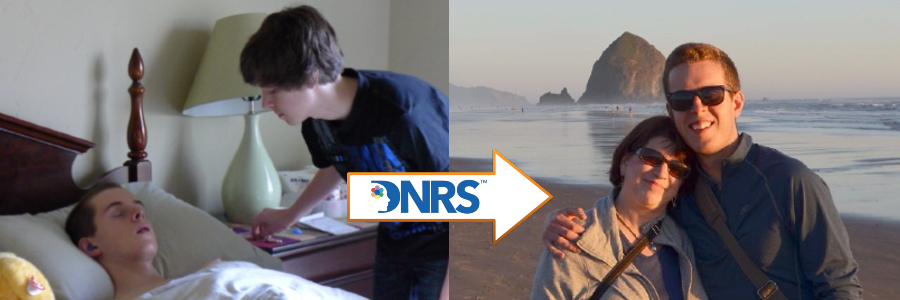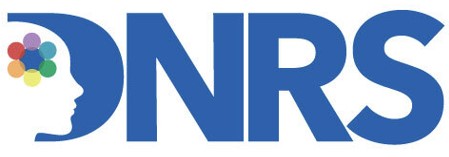
In 2009, at the age of 15, Riley contracted Lyme disease. The actual diagnosis came many years later, and by that time this once energetic and athletic teenager became bedridden, partially paralyzed and unable to speak or eat for 3 years.
To hear about how Riley recovered using the Dynamic Neural Retraining System, view the video below, or read on for a summary of his journey:
Riley Hi, everybody. So as you know, I’m Riley and I’m super excited to be here today. I have been, you know, in the same kind of room as all of you sat in a similar type of chair and experienced exactly what you know all of you’re experiencing this week. So, back about, just under six years ago, it was May of 2009, and in May of 2009, that’s when I had a major shoulder surgery. And about three weeks after that while I was still in a sling, I was bit by a tick and didn’t know it at the time but contracted Lyme disease. From that tick.
Riley’s mom : He started to get very, very dramatic symptoms that just took him down almost overnight. So he started with pretty severe flu-like symptoms is what we thought was happening. But they had a, it was a strange constellation of symptoms. Nobody could quite figure out why this healthy, thriving athlete, high school student was deteriorating with so many symptoms. And those included gut problems and pain and, and just debilitating weakness. And, and then just all sorts of, of weird stuff. He was suddenly very, very anxious about his environment. He was developing really severe digestive issues, was having trouble eating certain foods that had always been fine. He had constant pain constant headaches, severe fatigue. So he strange symptoms like his heart rate would plummet and then he’d stand up and it would go over the top dangerously high. His blood pressure was low. He was, he was losing massive amounts of weight.
Riley:: I remember in those days of facial paralysis, feeling as though, you know, every muscle, all of the hundreds of muscles in my face were attached to a string. And each one of those strings was attached to a different corner in the room. And it was like some wicked puppeteer was on the end of the strings pulling the string that I would just lie in bed twitching. My mouth looked like my face was as swollen as a blower fish unrecognizable.
Riley’s mom: So he was no longer able to feed himself. He was so weak he couldn’t walk. He whispered to me one day, mom, I know I’m supposed to be able to move one leg in front of the other to walk. One problem is I’m so weak, I don’t feel like I can even lift my leg to take one step. And the other issue is I feel like my brain’s not communicating to my body. I feel like I’m trying to tell myself what I’ve always done involuntarily. Like, we all know how to walk. You just put one foot in front of the other. And I remember him saying to me, I feel like my brain and my body are no longer communicating. What we realize now is the infection from the Lyme disease had invaded his brain and was impacting so many symptoms, not just physically, but neurologically.
Riley: I became sensitive to everything. I was sensitive to light, to touch, to sound. I remember even just like leaves fluttering outside the window of my bedroom being too much to handle. I would lie in bed in a dark room. My parents brought like felt bags to wrap all the Christmas presents in so that I didn’t have to, so that I could kind of come out and be part of the Christmas celebration without all of the crinkling of paper and the chemical smells of all of that. So those were my days of, you know, those were my darkest days. Those were the days when I was, I was sickest.
Riley’s mom: Lyme disease is a complex, controversial disease. We realized that treatment and access to treatment and what kind of treatment was very difficult to figure out.
Riley: I went to specialists all over. I went to naturopaths. I went to chiropractors, medical doctors, neurological specialists, you know, all sorts of people. I took IV antibiotics. I took tons and tons of detox therapies natural medicine, homeopathic stuff, and all of that helped me a lot.
Riley’s mom: We landed on some excellent, excellent medical practitioners. And what was so amazing is he would make little bits of progress and some of his symptoms would subside ever so slightly, like minuscule, but they were there. So we held onto hope that he could heal.
Riley: And seeing an incredible doctor in Kansas who, you know, got rid of facial paralysis and all sorts of neurological stuff, helped me to walk again, got me out of a wheelchair.
Riley’s mom: And to the rest of the world, it looked like our Riley was back. And in so many ways, he was coming back. But what, what we could really see, and what was so frustrating for Riley is he wanted to get back to the thriving, happy, healthy, no limitation teenager that he’d been before he got sick.
Riley: I was still dealing with a lot with multiple chemical sensitivities, with anxiety, with post-traumatic stress type stuff from the years of illness with motor function issues, with brain fog and, and, and all sorts of debilitating symptoms.
Riley’s mom: So we knew that we were missing a piece of his recovery, and we too wanted him to thrive and not just manage these leftover symptoms. And so we started looking into what kinds of things would help these symptoms, which we called anxiety, OCD, post-trauma chemical sensitivities. He was still having sleep issues and some gut issues and levels of cortisol, all kinds of things that his tests were still showing that were kind of outta whack. So we came across through a friend the DNRS program through Annie. And I kind of listened to it with a skeptical mind because we tried so many things and we kept hearing it’s all about the brain. And I thought, we’ve tried brain stuff, we’ve tried neurofeedback and Riley’s done all kinds of mindfulness and meditation and worked with therapists to get over the post trauma of being so ill. So I kind of held it up the back burner for a little while, and then I kept hearing more and more stories of people and doing my due diligence and reading about the program and listening to Annie speak and the testimonials. And I realized, we can’t ignore this. These people are describing things that Riley has struggled with. So I thought it’s non-invasive. Why wouldn’t we try it? Why wouldn’t we give Riley the best chance to see if this is something that could help? And deep down, I knew that there was something neurological still going on.
Riley: I knew, you know, this is in my brain. And I, and I felt that, and it just totally resonated with me. You know, talking about the brain and the way that trauma and various things can push you into limbic system dysfunction. I knew, I knew that I needed to get to this program and that I needed to do this.
Riley’s mom: And so Riley was able to attend one of the workshops in California, and it’s been incredible for him.
Riley: I can do anything. Like I am living the life of a 20-year-old. I am healthy and strong. Last year I climbed a mountain and that was like, I don’t know, it was like three or four months after the program and I had been like training and stuff, and I, I did like a seven hour hike, you know, I’m back to high school. I got sick in grade 11, so I have, you know, four grade, 12 courses left, and I’m doing those by next year I’m gonna be at university.
Riley’s mom: He has been able to shed those lingering symptoms that I’ve mentioned one by one, sometimes 10 at a time. And he’s been doing the, the program for a little over six months now, about eight months. And it’s kind of like when you have too many clothes on and you’re too hot and you start shedding layers. And that’s what it’s been like for Riley. He’s shedding the layer of anxiety and shedding the layer of that hypervigilance.
Riley: I’m working out like three times a week. Yesterday I ran it 10.5 miles an hour on the treadmill. I’m doing sprints. I’m training with a personal trainer. I’m playing hockey once a week, and now that it’s winter, I’m playing hockey like three times a week, going out on the outdoor ice. I played golf in the summer. I have my driver’s license, my eyes. I was, I used to have terrible troubles with my eyes and eyesight. You know, that’s why reading and all of those things were so difficult. And , I have my driver’s license now. I have a part-time job. I, at Christmas, I ate chocolate and, you know, all sorts of foods that I, you know, never thought I would eat again. Or just only could dream of eating again. I went in one of the smelliest stores on Earth, and any teenagers out there or parents with teenagers will know about it. It’s Abercrombie and Fitch, and it’s just, I did that just to see, like, I knew like, I’m gonna be fine. So I walked in there knowing that it’s a smelly store and could barely smell it all, it smell, it just smelled good.
Riley’s mom: He’s no longer having to manage his environment to cope. He’s able to just go out in the world and do what he wants, do it when he wants, and to tackle with exuberance and excitement, the goals he has for the rest of his life. He’s now a 21-year-old looking forward to a life without hindrance and from where he’s come, that’s pretty incredible. It’s pretty incredible.
Since recovering through DNRS, Riley has travelled the world. He is fulfilling his dreams, creating his visions, and living the life of a healthy, vibrant, and exuberant young man. And best of all, he is now helping support others who are implementing DNRS in his role as a Certified DNRS Coach.
We know how challenging it can be to embrace life when you are still dealing with a chronic and often invisible illness.

